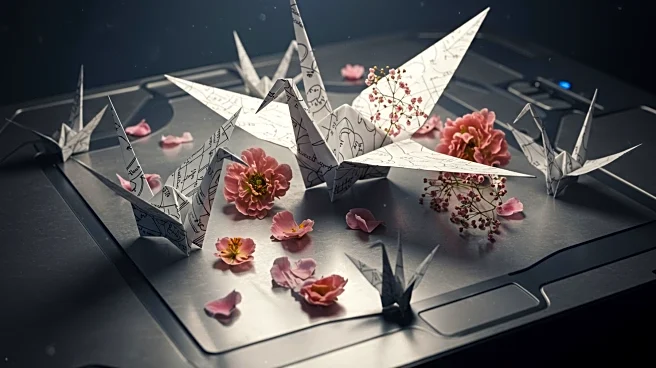What's Happening?
Researchers at Brigham Young University, led by Larry Howell, have developed a new class of origami structures known as bloom patterns. These patterns fold flat and unfold like flower petals, offering significant improvements in spacecraft design. The bloom patterns allow for compact storage and reliable deployment of antennas, optical devices, and other space equipment. The research, published in the Proceedings of the Royal Society A, demonstrates the potential of these patterns to enhance the efficiency and cost-effectiveness of space missions. The team has created mathematical models and physical prototypes, ensuring the reliability of these designs in practical applications.
Why It's Important?
The introduction of bloom patterns in spacecraft design represents a significant advancement in the field of aerospace engineering. These patterns enable more efficient use of space and resources, potentially reducing launch costs and increasing the payload capacity of rockets. The ability to pack components tightly and deploy them reliably is crucial for the success of space missions, making bloom patterns a valuable innovation. Beyond aerospace, these designs have applications in temporary shelters, pop-up architecture, and robotics, showcasing their versatility and potential impact across various industries.
What's Next?
Future research will likely focus on discovering new origami bloom patterns and exploring their mechanical behaviors. Engineers may investigate the use of different materials to enhance the durability and functionality of these designs. The application of bloom patterns in other fields, such as architecture and robotics, could lead to innovative solutions for compact and deployable structures. As the technology advances, collaborations between universities and aerospace companies may emerge to integrate these designs into commercial space missions.
Beyond the Headlines
The development of bloom patterns highlights the intersection of art and science, demonstrating how traditional practices like origami can inspire technological innovation. This approach encourages interdisciplinary collaboration, fostering creativity and problem-solving in engineering. The use of origami in design also raises questions about sustainability and resource efficiency, as compact and deployable structures can minimize material usage and environmental impact.











